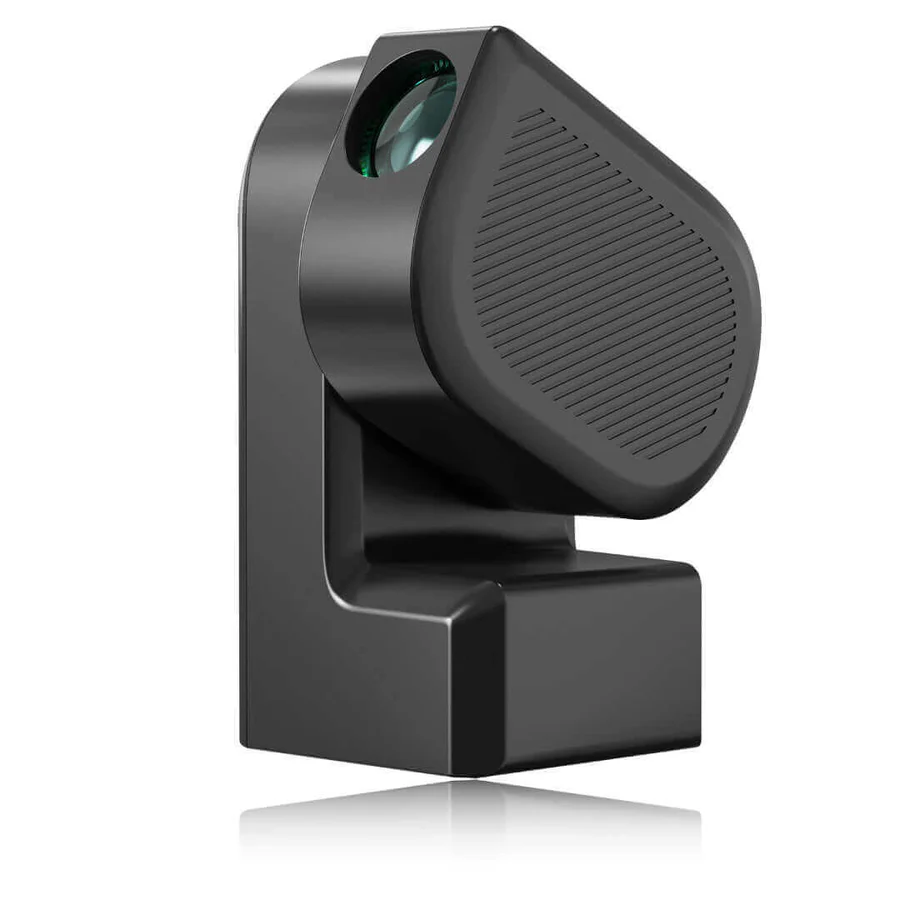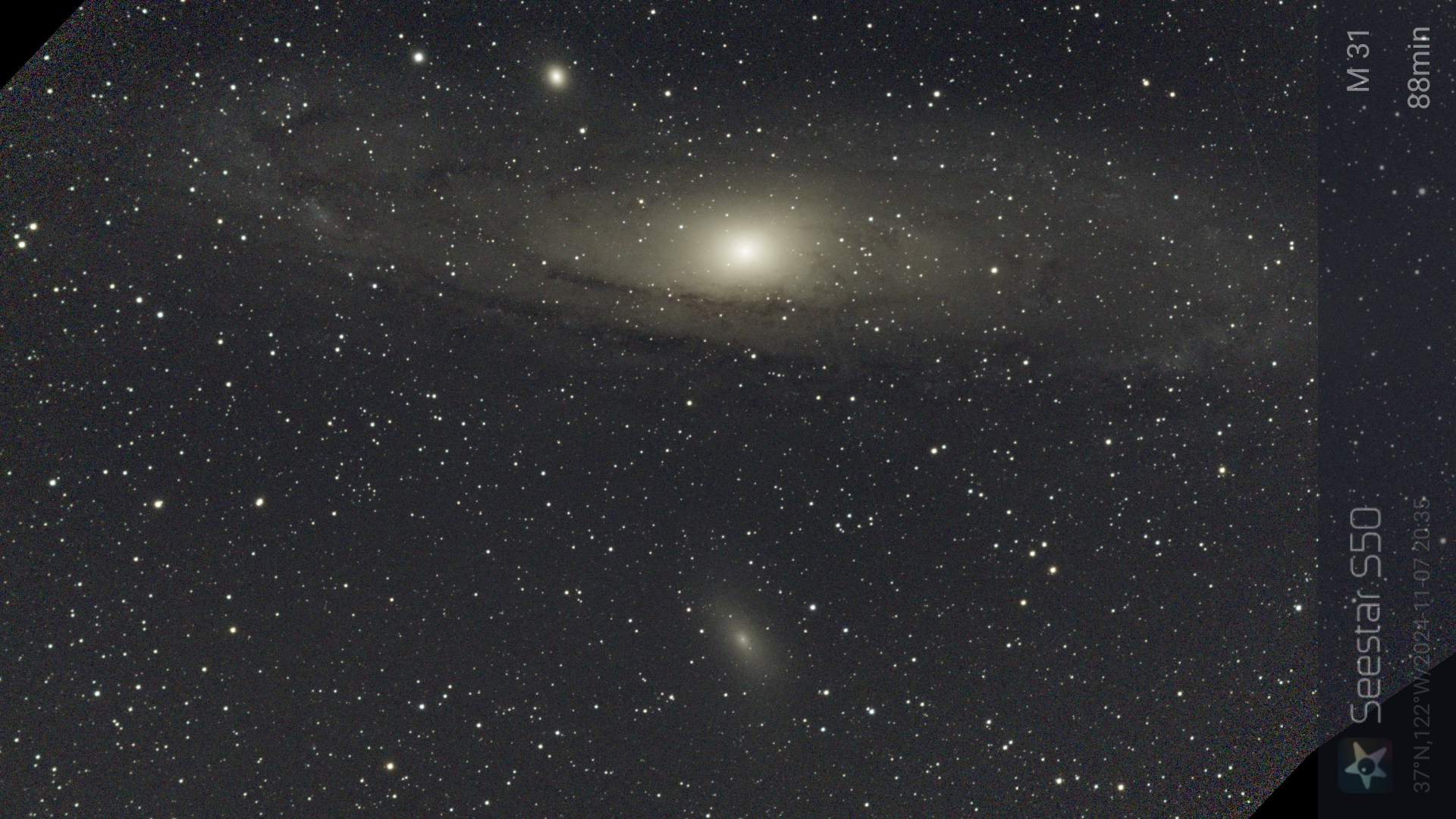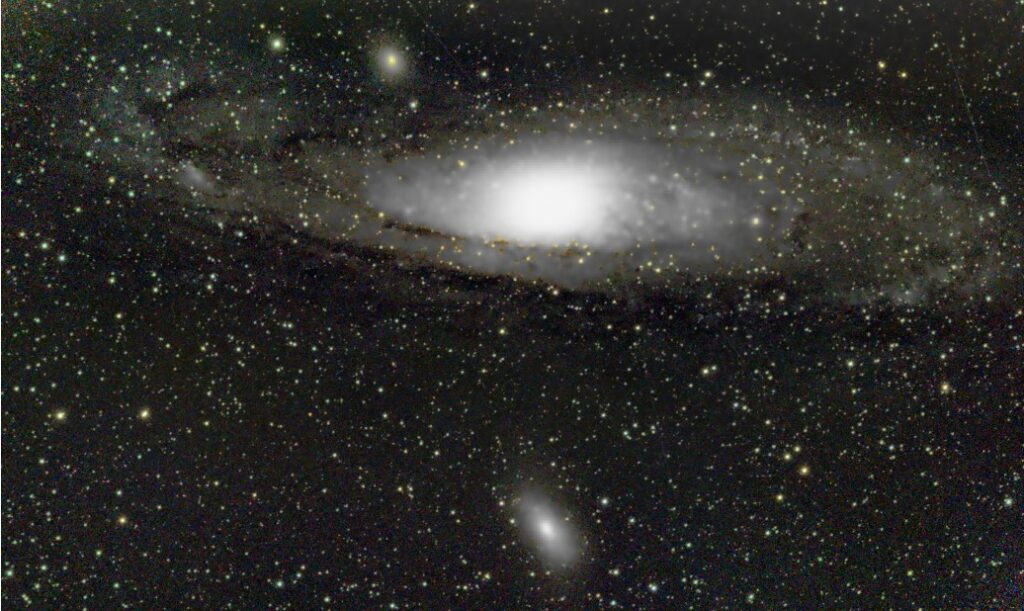Astrophotography for those without huge budgets of time or money…

So, in an effort to get back to blogging about things that may not matter in the grand scheme of things, but which provide some measure of joy to me, I present something that I have not blogged about, but which might be of interest to others: my astrophotography tinking using a nifty gadget: the Seestar S50. This little gadget is a highly portable, fully contained robotic astronomy camera that you access and control via a smart phone app (I am using Android these days, using a Google Pixel 6). It has a 50mm aperture (which doesn’t sound like a lot to some like myself who has built telescopes with 12in aperture, and helped refurbish even larger ones) but it’s a very neatly implemented system, and can be used to take not only deep sky projects, but also the moon, the sun (with an included solar filter) and even terrestrial objects such as birds.
The Seestar is a sophisticated (but simple to use) device which works by automatically aiming the telescope at the object of interest and taking multiple short images (10s by default) and then aligning and then adding them up. In 10s, the number of photons collected may be quite small, but over time they add up, and you get clearer and clearer images of the dim deep sky objects. It’s really quite remarkable how well this works. And yet it’s quite easy to use: I took more astrophotos in the first day I had it than I had done in my entire life (admittedly, that’s not a lot, but it’s not zero either) and with better results.
I have posted a few of these pictures on my Mastodon or Facebook feeds, but haven’t posted any here before. I’ll probably pick out some of the backlog shortly and rehost them here, but instead I’ll show you one of the new features that was enabled in a recent app update: Mosaic Mode.
People don’t realize that some objects in the night sky are actually quite large because they are dim, often below what you can see with the naked eye from most locations. The most obvious example is the Andromeda Galaxy, whose apparent angular size is about three degrees, which is about six times the diameter of the full moon. The Seestar’s field of view is about one degree, which means that you can’t get a single picture. But in a recent software update, they added “mosaic mode” which allows you to frame an object that is too large to fit in a single image, and automatically scan over it to assemble an image with a much wider field of view. Last night I tried this for the first time from my home location, a largely suburban location with “Bortle 5” skies. Andromeda isn’t even faintly visible to the naked eye from this location. But the Seestar had no problems locating the object, and once I configured it with the framing that I liked, I set it to go.
After 88 minutes of exposing, this is the image as it appeared from my cell phone. No processing has been done by me, except to rate it into landscape mode.

The Seestar will also store a FITS format image, along with the JPG image. The FITS image has greater bitdepth, and allows for more aggressive processing. I use the free software Siril to process astronomy images, and with a little bit of pushing and some additional cropping, I turned the above into this:

Above and to the left of the main galactic core you can see M32, and below it the small elliptical galaxy M110. Both are satellite galaxies of M31. To the left of the core of the galaxy is a faint brightining in one of the spiral arms of M31. This is a star forming region designated NGC 205.
It’s astonishing how easy this is, and how (relatively) inexpensive. The Seestar S50 has a list price of around $500, and this required no manual tracking, no staring through an eyepiece, literally just selecting the object using an app, and the gadget does all the hard work.
I’ve used it to image the sun, moon, and numerous deep sky objects. It can image planets like Jupiter and Saturn, but it actually isn’t the best for those (it lacks sufficient focal length to get good detail). But I’ve used it to take pictures of comets, minor planets and even a supernova in a distant spiral galaxy. It’s tons of fun.
Expect more about it in the future. Feel free to add questions or even make requests of things to image.
Hope you all are having a good day.
I recall burning three or four weeks of a sabbatical getting Saccade.com on the air with Wordpress. So much tweaking…